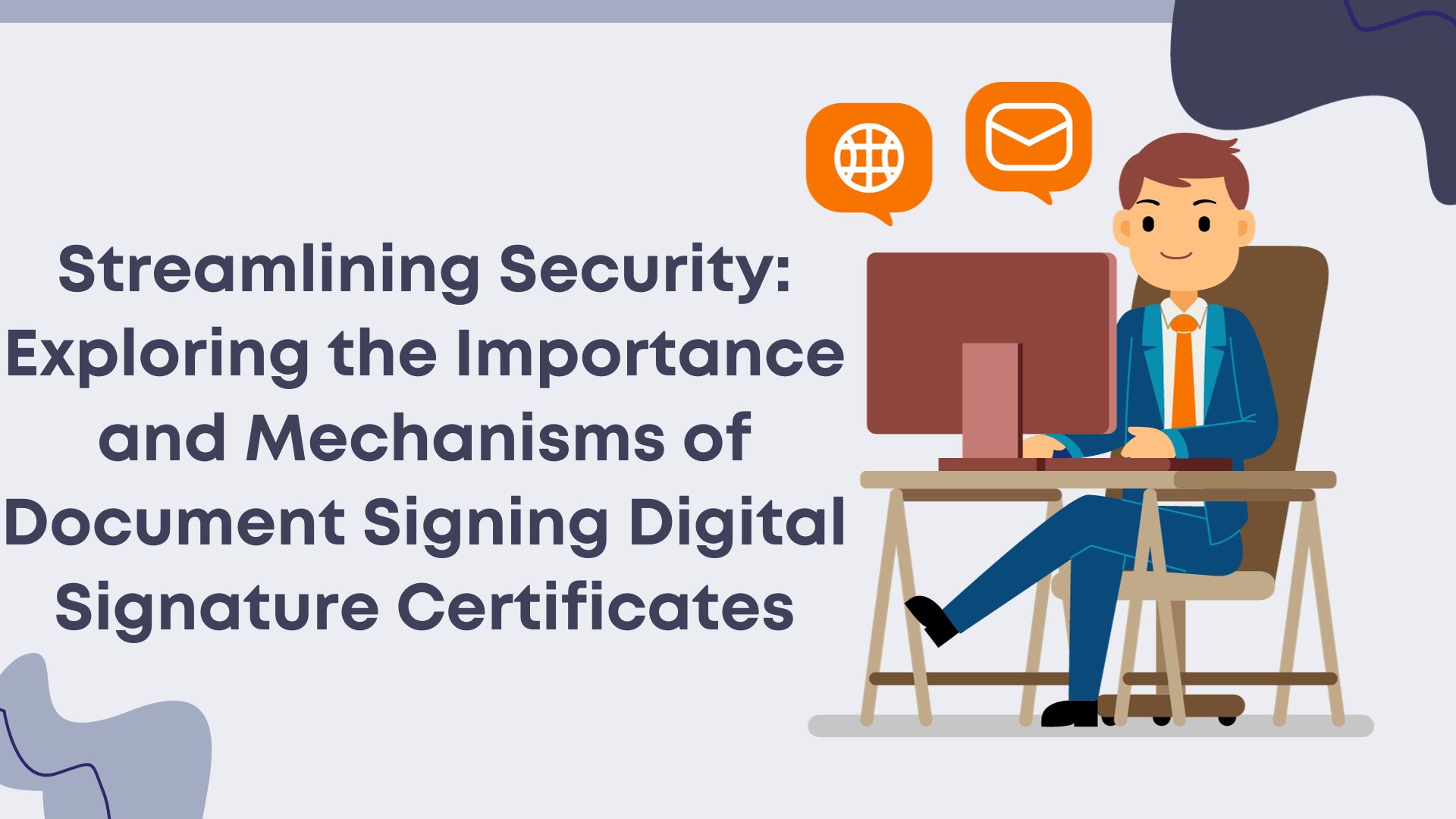In today’s digital age, where transactions, contracts, and official communications are predominantly conducted online, ensuring the integrity and authenticity of electronic documents is of paramount importance. The utilization of Document Signing Digital Signature Certificates (DSCs) stands as a crucial mechanism in guaranteeing the validity and security of digital interactions.
Understanding Document Signing Digital Signature Certificates
Document Signing Digital Signature Certificates serve as a digital equivalent to handwritten signatures or stamped seals, providing a verifiable mark of authentication and integrity for electronic documents. These certificates are issued by Certifying Authorities (CAs). Who authenticate the identity of the signatory, thereby validating the digital signature applied to a document.
Importance in Ensuring Security and Validity
Authentication and Verification:
DSCs provide a robust method to verify the identity of the signer and ensure the document has not been tampered with since its signing. This authentication process instills trust among parties involved in digital transactions, assuring them of the document’s integrity.
Legal Validity:
In many jurisdictions globally, including various laws such as the eIDAS Regulation in the European Union and the Electronic Signatures in Global and National Commerce Act (ESIGN) in the United States, DSCs hold legal validity equivalent to handwritten signatures. This legality solidifies the enforceability of digitally signed documents in legal proceedings.
Data Integrity and Non-Repudiation:
DSCs provide a mechanism to maintain the integrity of data by ensuring that once a document is signed. It cannot be altered without invalidating the signature. Furthermore, it prevents signatories from denying their involvement in the transaction due to the non-repudiation feature.
Mechanisms and Technologies Underlying DSCs
Public Key Infrastructure (PKI):
At the core of Document Signing Digital Signature Certificates lies the PKI, a framework that facilitates secure electronic transfer of information by using cryptographic keys. This system involves the use of a public key for encryption and a private key for decryption, ensuring secure communication and verification of identities.
Hash Functions and Cryptography:
DSCs rely on hash functions and encryption algorithms to create a unique digital fingerprint of a document. Which is then encrypted using the signer’s private key. The recipient can use the signer’s public key to decrypt and verify the authenticity of the signature.
Applications Across Industries
Legal and Contractual Agreements:
In legal environments, DSCs streamline the execution of contracts and agreements, reducing paperwork, time. And costs while ensuring the legality and authenticity of the documents.
Financial Transactions:
Financial institutions utilize DSCs to authenticate and secure electronic transactions, safeguarding sensitive financial data and preventing fraudulent activities.
Government and Administrative Processes:
Governments worldwide leverage DSCs for official documentation, citizen services, and administrative procedures, enhancing efficiency and security in public services.
Future Trends and Advancements
The evolution of DSCs continues with advancements in encryption technologies, blockchain integration. And biometric authentication, further fortifying the security and usability of digital signatures. Additionally, interoperability among different signature formats and standardization efforts contribute to their widespread adoption.
The Technical Framework of Document Signing Digital Signature Certificates
Encryption Techniques:
DSCs rely on sophisticated encryption techniques such as RSA (Rivest-Shamir-Adleman) and ECC (Elliptic Curve Cryptography) to secure the digital signature process. These encryption methods ensure the confidentiality and integrity of the signed documents.
Certificate Authority Infrastructure:
Certificate Authorities (CAs) form the backbone of DSCs, issuing certificates to individuals or entities after validating their identity. This validation process involves stringent checks to prevent fraudulent use of certificates.
Digital Signature Algorithms:
Algorithms like SHA (Secure Hash Algorithm) are employed to create unique hash values or digital fingerprints of documents. Coupled with asymmetric encryption, these algorithms ensure the non-repudiation and integrity of digital signatures.
Enhanced Security Measures in DSCs
Multi-Factor Authentication:
To bolster security, DSCs are incorporating multi-factor authentication, combining something the user knows (like a password), something they possess (a token or a smart card). And something unique to the user (biometrics) for stronger identity verification.
Blockchain Integration:
Integration with blockchain technology is gaining traction in DSCs, providing an immutable ledger for document history, further enhancing the credibility and traceability of signed documents.
Quantum Computing Resistance:
As quantum computing advancements pose potential threats to current encryption standards. Research is underway to develop quantum-resistant algorithms ensuring the continued security of DSCs.
Conclusion
Document Signing Digital Signature Certificates play an indispensable role in the digital ecosystem, ensuring the authenticity, integrity, and legal validity of electronic documents. Their adoption not only streamlines processes but also fosters trust and security in the increasingly interconnected digital world, paving the way for a more efficient and secure future of online interactions.
